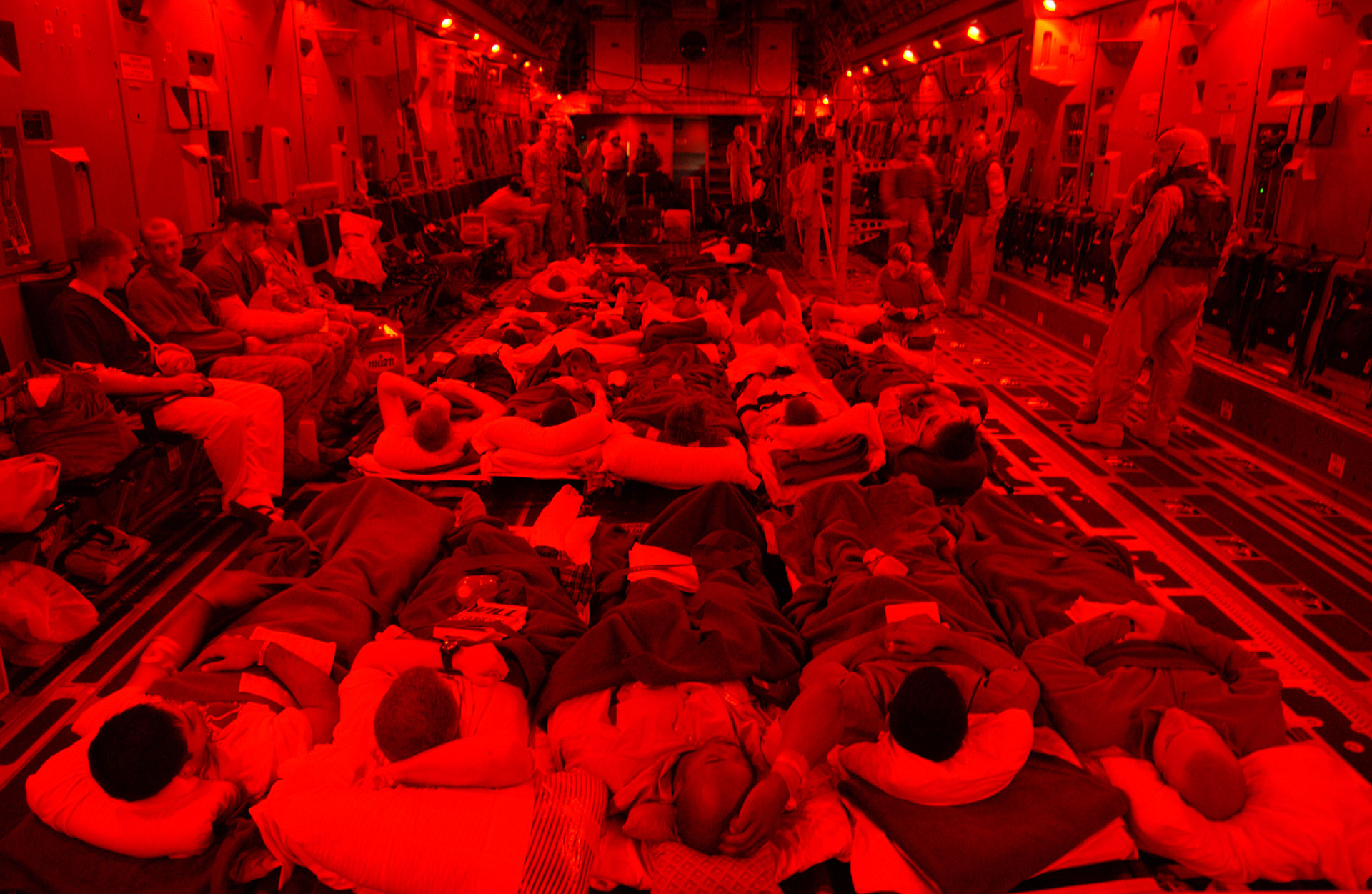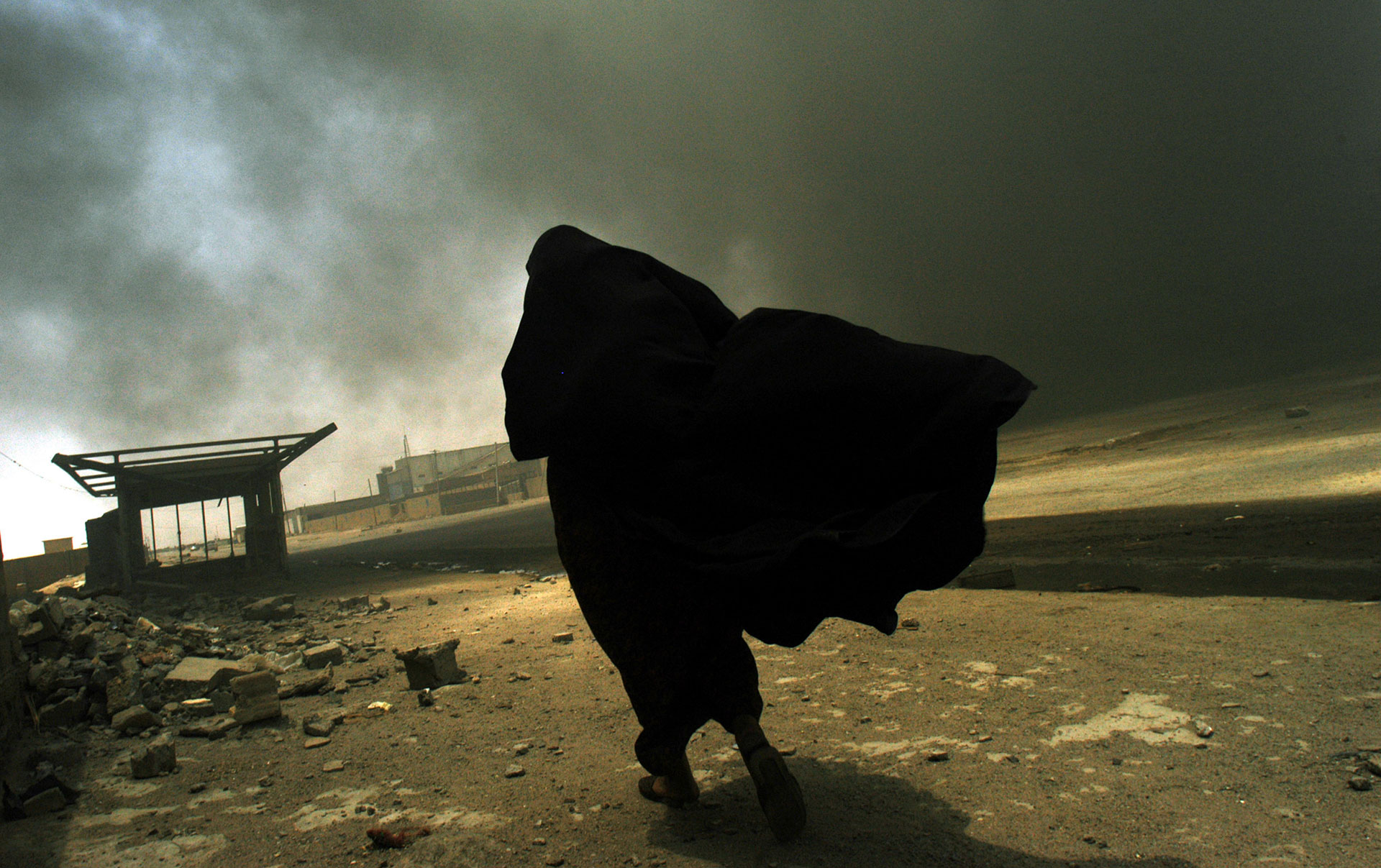Redefining Boundaries No. 1
Photojournalist Lynsey Addario captures quiet moments in conflict zones
Airbnb deeply immerses people in communities outside of their own. In our new series, Redefining Boundaries, we’ll take you into the lives and minds of creative pioneers and community builders who are unafraid to set their own course to make the world a better place than they found it. We aim to drop you in the middle of their stories, so you can see the world from their unique vantage point. Join us as we explore what motivates and inspires these creative individuals to forge their own paths.
Back in architecture school, a professor once told me to “make every drawing like it could be your last.” This sentiment might sound trite until you meet someone like photojournalist Lynsey Addario. She has photographed ISIS in Iraq, sexual assault in Madagascar, tuberculosis in India, and other crises around the world. She has been kidnapped twice while covering war zones — in Libya in 2011, along with three other New York Times journalists, and in Iraq in 2004. In other words, Addario literally risks her life for her work.
Addario’s images from conflict areas have been featured in publications that range from the National Geographic and Time to Vanity Fair. In her recent, unflinching memoir, It’s What I Do: A Photographer’s Life of Love and War, Addario explores how these harrowing experiences have shaped her life. I sat down with her to discuss what it is like to regularly document hardship and conflict and the mental discipline her work requires.
What themes guide your work and process?
Man-made issues are the most interesting to me — women’s issues, injustice issues, and humanitarian crises around the world, not necessarily a typhoon or a hurricane. I don’t often work in the United States, but that’s mostly because I’ve lived abroad for 16 years. I’ve covered Iraq since 2003. I’ve been working in Afghanistan for 16 years, and Darfur for six years. I’ve been going back and forth to the Congo since 2006. Many of the countries that I cover are places that I repeatedly go back to.
How do you find your stories?
I often travel with an assignment, but it’s important not to have the story locked in my head before I get there. The story should unfold naturally and the subjects should communicate what’s happening. My purpose is to be their messenger.

Injured marines wait to be transferred to Ramstein air base, in Germany for treatment coming out of the battle of Fallujah, November 2004. Lynsey Addario/Reportage by Getty Images.
You’ve been in many circumstances where each photograph could have been your last. Are you thinking about that in the moment?
No one goes into an assignment thinking they’re going to die. As war photographers, we know it’s a possibility, but we all go into stories thinking we’ll get through them. I’m always trying to shoot the most effective photo I can — whether or not it’s going to be my last. It’s my responsibility to do the best work I can do, because that’s what separates the mediocre work from the photos that will always resonate.
How does fear affect your work?
If something is going on in my head, it shows in my photos. Fear is a big part of that. The day that we were taken hostage in Libya, I had a premonition that something was going to happen. I was unable to photograph because I was so nervous.
I carry a lot of trauma from the past with me. I’m paranoid about getting kidnapped again, especially when I’m working near ISIS-held areas or other places where kidnapping is a possibility. Under fear, I work faster.

KORENGAL VALLEY, AFGHANISTAN. Specialist Carl Vandeberge, center, and Sargeant Kevin Rice, behind, are assisted as they walk to a medevac helicopter minutes after they were both shot in the stomach during a Taliban ambush, which killed one soldier, and wounded both of them. Spc. Carl Vandeberge and Sgt. Kevin Rice, were flown out immediately for surgery. October 23, 2007. Lynsey Addario/Reportage by Getty Images.
What happened to your photos from Libya?
I had a premonition that something was going to happen, so I put a hard drive with all of my photographs in the mail. I was able to get back all my photos from Libya except for ones I had taken a few days prior to being captured.
What sort of mindset are you often in when you’re working out in the field?
I’m walking into situations where the light is dramatic; the sounds are pungent. I feel stress from things like troops coming. All sorts of emotions are piqued when I’m shooting. I’m worried about whether or not the still image will convey everything I was feeling. And I wonder if my photos will tell the story that I was hired to tell. I’m asking myself questions like, “Will it speak to the reader or the viewer? Will it resonate? Will it be powerful? Will people stop to ask questions?” All those things create a huge amount of stress.
Travel has been the best education for me — not only culturally, but also intellectually.
You often travel alone on assignment or in small groups. How do you experience places differently when you’re traveling in small groups?
The smaller the group, the more intimate the subject. Everything is stripped down. When it’s just me or a small group, people start to feel comfortable. In most of the places I work, I have to stay in people’s homes. One of the tactics I use is to go back over and over again during the course of a few days or a few months. Every time you go back to a person, they feel more comfortable and you get better access.
In most of the places I work, I have to stay in people’s homes. On the front line in Libya, we traveled in a larger group for safety purposes. Seventeen journalists slept on the floor of this family’s house. They basically gave us the keys and said, “Sleep here.”
What habits have contributed to your success as a photojournalist?
First of all, I always feel like I’m failing. That said, it’s important to be passionate and dedicated. I’ve been shooting for 22 years. I’m never complacent; I’m always working. I put a huge amount of pressure on myself. I never want to be disrespectful to the people that I cover or too comfortable. It’s important to always be hungry and to look to others for inspiration.
I always feel like I’m failing. I’m never complacent. Under fear, I work faster.
I also set goals and constantly update them. They’re not only about photography. They’re also about other things, like trying to learn Arabic, or one goal was to write a book. Ultimately, I want to make myself a more well-rounded person.
Who are the photographers that inspire you?
Daniel Berehulak. Paolo Pellegrin. Stephanie Sinclair is always doing strong work on women. It’s important to always be looking around.
Do you have advice for other creatives who want to make impactful work?
People often ask me, “How do I work for the New York Times or Nat Geo?” The answer is always, “Well, you have to be focused, and you have to know what stories you want to tell.” The most effective way to get started is to dive in and do it. Don’t wait for an assignment.

An Iraqi woman walks toward a fire at a liquid gas factory, in search of her missing husband, as fires rages across the country after the fall of Saddam Hussein in Basra, Iraqi, April 2003. Lynsey Addario/Reportage by Getty Images.
Your book It’s What I Do: A Photographer’s Life of Love and War was published last November. How did your approach to writing compare to your work on the front line?
It’s a totally different process. Photography is very extroverted. I’m out on the street, walking into people’s homes, and constantly making conversation to help people feel comfortable. Writing is totally the opposite. It’s the process of sitting down and looking back. I revisited twenty-plus years of vignettes that I’d witnessed and photographed, but hadn’t necessarily processed.
If you could choose an occupation outside of photography, what would it be?
I would probably go to school for basic lifesaving like MSF (Doctors without Borders).
Tell us about your upcoming movie.
Warner Brothers has optioned the rights to my book. Jennifer Lawrence is playing me, Spielberg is directing, and Peter Craig is writing the screenplay. So far everything is going very well. They hope to start shooting in the next year or so.
Is there anything else that you’d like the Airbnb community to know about you?
Most of the people who use Airbnb are people who travel internationally. Get out there and keep traveling. There’s no better way to experience the world. Travel has been the best education for me — not only culturally, but also intellectually. I’ve learned so much about myself through travel. Every time I go to a new country, I’m always surprised at how different people are and also how similar people are — we all want the same things.
——-
Feature image caption: NORTH KIVU. Kahindo, 20, sits in her home with her two children born out of rape in North Kivu, in Eastern Congo, April 12, 2008. Kahindo was kidnapped and held for almost three years in the bush by six interhamwe, who she claims were Rwandan soldiers. They each raped her repeatedly, and she had one child in the forest, and was pregnant with the second by the time she escaped. An average of 400 women per month were estimated to be sexually assaulted in the autumn of 2007 in eastern Congo, while in the first months of 2008, the figure dropped to an average of 100 women per month. This said, many women never make it to treatment centers, and are not accounted for in these statistics. Lynsey Addario/
Lynsey Addario’s commercial photography is represented by Verbatim and her book is available here for purchase.